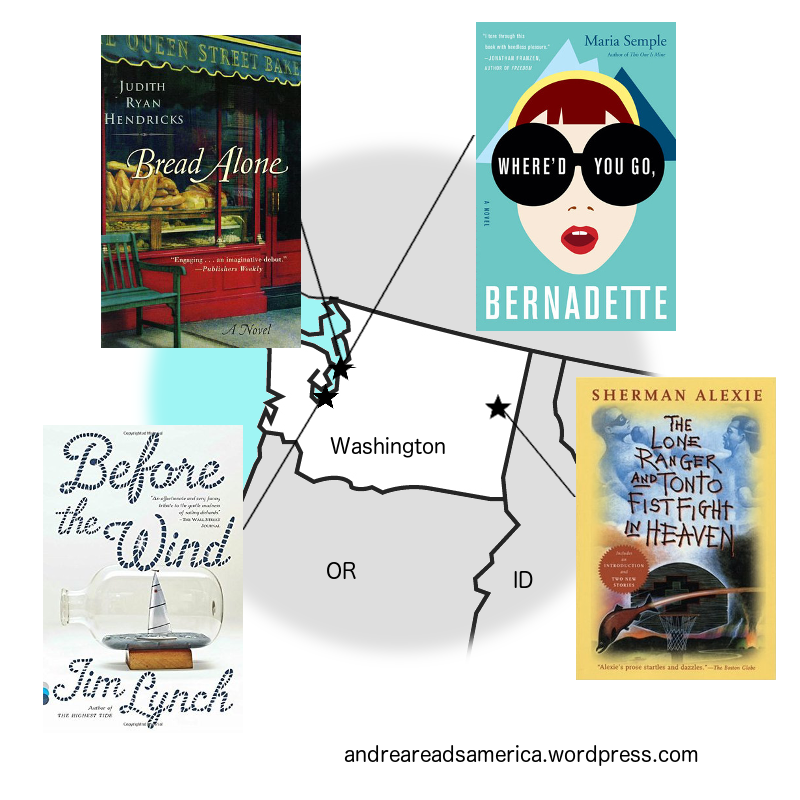
I wasn’t sure what to expect from Wisconsin. Maybe hockey and cheese? What I read felt more like Minnesota, but I probably didn’t read the right kinds of books to get the cliché Wisconsin. The Jesus Cow was the closest to dairy I got. I probably should have read a mystery to get the real scene setting I was looking for; I’ve found cozy mysteries are among the best for providing a sense of place. I was super excited to read The Art of Fielding again though. In fact, two of the books I read included a love of baseball. Is baseball big in Wisconsin, or was that just a coincidence?

Novel: The Art of Fielding
Author: Chad Harbach
Setting: Wisconsin
More about becoming excellent, about literature and baseball, and about the mixed up relationships among a close-knit group at Westish liberal arts college than about Wisconsin, I still couldn’t wait to read The Art of Fielding again when I got to Wisconsin on my reading tour. Filled with flawed and loveable characters, including my second favorite Owen in literature — an Owen who, like Owen Meany, is the centerpiece in a story that involves a baseball cracking into someone’s head — this Owen is a refined, elegant baseball player and scholar who reads books in the dugout with a reading light clipped to his baseball cap.
The Art of Fielding is a page-turner with depth and beauty, with a cast of characters I loved, and who I didn’t want to say goodbye to in the end.

Novel: Wingshooters
Author: Nina Revoyr
Setting: Central Wisconsin
Told from the perspective of a half-Japanese, half-white child who is abandoned by her parents to live with her grandparents in their small Wisconsin town, Wingshooters is a story of how blinded people can be to their own cruelty. Michelle’s white grandparents reject her Japanese mother but accept Michelle with full-hearted love and teach her how to stand up for herself against the racism she encounters as a mixed-race child in a white Wisconsin town.
But when a black couple comes to town, her grandfather and his friends show their true racist colors. Her grandfather does not see at all how the way he treats the black couple, and the hatred he shows them and their differentness, is exactly the same hatred he defends Michelle against from the town.
What I appreciate most about this book is how well it demonstrates the awful recognition that someone you love is capable of inflicting terrible harm, and with such unjustified hatred, because they are racist. How do you deal with that when you love them more than any other person on earth? It also clearly shows the ridiculousness of the “I’ve never seen that person do anything bad” argument when a man is accused of abuse. Abusive men hide their abuse well — of course they don’t present themselves to the world as abusers! — and so the world defends the abusers instead of their victims.
“This is your fault!” she cried out. “You could have stopped this! You could have stopped him the day Kevin went to the emergency room. You could have stopped him when they saw Kevin’s scars at school. But you had to stick by him, be his buddy. You had to deal with this like men.” Her face screwed up when she said this. “And instead of doing right by Kevin and me, you just looked the other way.”
nina Revoyr

Novel: The Jesus Cow
Author: Michael Perry
Setting: rural Wisconsin
Set in the small town of Swivel, WI, a tiny place the Interstate now runs through, The Jesus Cow is a comic story about a quiet bachelor farmer, Harley Jackson, whose new calf has a perfect likeness of Jesus on its flank. Harley tries to hide the calf at first, knowing the hubub it would create, but after the calf is spotted by the mail carrier, next thing Harley knows, his calf is all over the Internet, and pilgrims are trampling his private property for a glimpse of the sign from God. His farm turns into a full blown circus, with a talent agency managing every aspect of it, and Harley the quiet bachelor — along with the quiet town — gets swept away by it.
“Well… I… ah… yah! Yah!” In his eager panic to complete a sentence, he went full-on Norwegian.
Michael Perry
This was a fun, light read, and after living in Minnesota for a couple of years, I especially appreciated the Wisconsin accents and midwestern aloofness.

 Novel:
Novel:  Memoir:
Memoir:  Novel:
Novel: 
 Novel:
Novel:  Novel:
Novel:  Book:
Book:  Novel:
Novel: